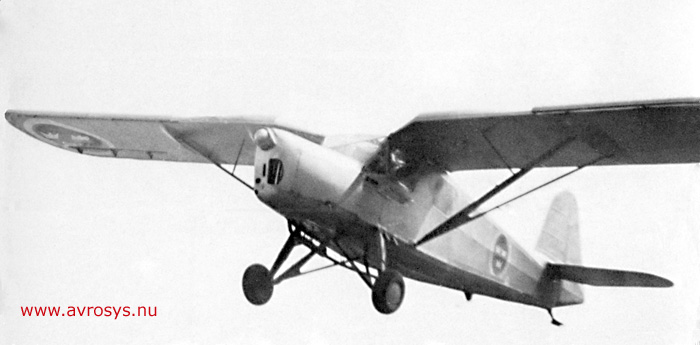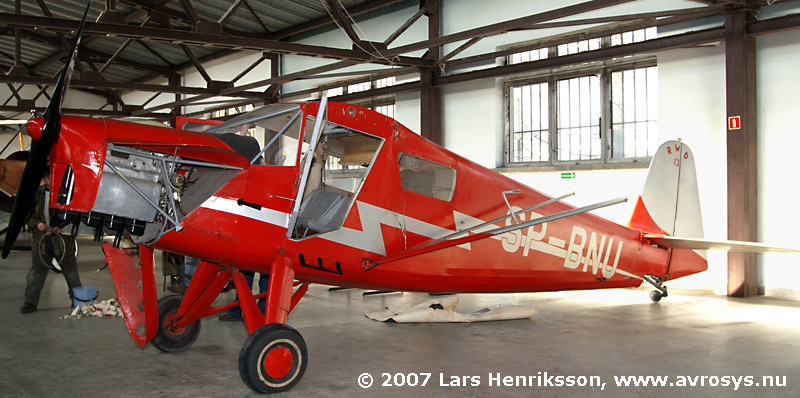|
|
||
|
Tp
11 - RWD
13 (1940-1945) |
||
|
Page 1 (2) |
||
|
|
||
 |
||
|
This
aircraft, which got the (unofficial) designation Tp
11, arrived to the Air Force in an unusual way. It landed at the
island of Gotland on the 14th of September 1939, two weeks after the
German occupation of Poland.
The
pilot's name was Edmund Jereczek. He was a pilot (podporucznik -
2nd lieutenant) of Pluton Lacznikowy (Liaison Platoon) from Dowodztwo
Ladowej Obrony Wybrzeza (Coastal Ground Defence Command), organized in
Kepa Oksywska near Gdynia in first days of September 1939. The airmen
and aircraft in this unit were from civil Aeroklub Gdanski (Gdansk
Aero Club). The RWD-13 aircraft also carried a passenger,
Jereczek’s fellow officer Nowacki. The two men were allowed to stay in
Sweden. Jereczek, however, travelled already in October to the United
Kingdom, where he served in the RAF during the whole WWII as a pilot and
flying instructor.
The
aircraft carried the Polish registration SP-BML (C/N 216).
The abbreviation RWD stands for Rogalski, Wigura and Drzewiecki. RWD aircraft was built in DWL (Doswiadczalne Warsztaty Lotnicze – the Experimental Aviation Workshops) factory in Warsaw. These Polish engineers designed a number of aircraft together, even if the team was reduced from three to two after Stanislaw Wigura’s tragical death in a chrash with a RWD 6 in 1933. Their aircraft were designated RWD 1 to RWD 25 and were in the range from light single-engined to medium twin-engined machines. The RWD 13 was a high-winged monoplane with STOL characteristics – in this case powered with a de Havilland Gipsy Major engine – but also PZInż and Walter engines were used. The wings were foldable backwards and were equipped with automatic slats and slatted ailerons. The material was plywood with a fabric covering. The fuselage was constructed with a welded truss with wooden longerons and fabric covered formers The cockpit was equipped with heating and ventilation. Long travel shock absorbers allowed some tougher landings.
On
juridical grounds, the aircraft could not officially be incorporated in
the Air Force. Still, it was painted with Swedish nationality markings
and used as a target aircraft. Civil pilots from Svenska Aero AB
flew it. After the war the Tp 11 got the civil Swedish registration SE-AOF. It was used until 1951, when it burned in Stockholm after a crash. The photo at top below – unfortunately of bad quality – shows the Tp 11 in Swedish markings. Thanks to Leszek A.Wieliczko, Samoloty wojskowe świata 1935-1945, for the help.
Photo below shows RWD 13
SP-BNU c/n 283 at the Polish
Aviation Museum in Crakow. This aircraft was owned by the Polish air
line LOT and used as an air taxi. It is now restored in one of the
hangars in the museum.
|
||
 |
||
|
|
||
|
|
||
|
|
||
|
© Lars Henriksson |
|
Updated 2011-02-26 |
|
Custom Search
|
||